
What is Waterproof Cement and How Does It Work?

Create Your Dream Home With Our Painting Experts
Fill the form below to book a free site evaluation by Nerolac Nxtgen painting Services expert
Have you ever wondered how buildings are constructed in places prone to flooding or high groundwater levels? Or how structures like basements, retaining walls, and tunnels are built underground without leaking? The answer lies in waterproof cement - a specialised cement formulation that helps prevent the penetration and transmission of water. In this article, we'll look deeper at waterproof cement, how it works, different types, and common applications.
Understanding Waterproof Cement
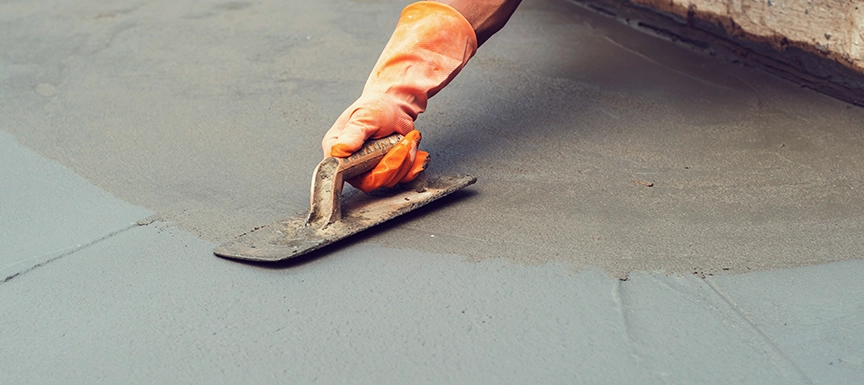
What is Waterproof Cement?
Waterproof cement is a cement product modified or treated to reduce its permeability to water. It fills the tiny pores and capillaries within hardened cement and concrete to prevent water from seeping. On the other hand, regular cement is quite porous and allows water to pass through easily over time if exposed to moisture continually. Products like Nerolac Cement Putty can be used to treat regular cement and seal its pores, making it more water resistant.
Benefits of Using Waterproof Cement
Beyond the primary benefit of preventing water seepage, there are some other key advantages to using waterproof cement formulations:
- Protection for below-grade foundations, basements, tunnels, and other subterranean structures.
- Improved durability of structures in wet or coastal areas like bridges, piers, ports, and ships.
- Waterproofing of planters, fountains, pools, and other garden or landscape fixtures that will be exposed to water long-term.
- Prevention of leaky roofs, cracks in water-holding tanks, and water damage to below-grade parking structures.
- Reduced repair costs, increased service lifetime, and lowered long-term maintenance needs of the constructed asset.
- Suitability for critical uses like wastewater containment and municipal water infrastructure projects.
Exploring Water Proof Cement
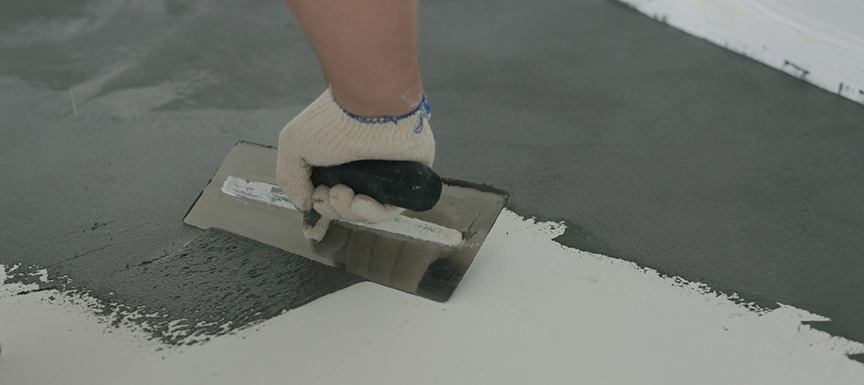
Difference Between Waterproof Cement and Water Proof Concrete
- It's important not to confused waterproof cement with waterproof concrete, as they are different yet complementary building materials:
- Waterproof cement is a specialised cement formulation that becomes the binding agent or "glue" within a concrete mix.
- Waterproof concrete has waterproof cement added during production, but it also includes other water-blocking additives mixed directly into the concrete slab.
- Cement becomes the hardened paste that holds sand, gravel, and aggregates together in concrete. Concrete is the composite building material resulting from the mixture.
- Waterproof cement helps make concrete more water resistant by filling its pores from within. Waterproof concrete utilises extra protections on top of the waterproof cement to provide multiple barriers against water penetration.
Applications of Water Proof Cement
Common applications where waterproof cement varieties are employed include:
- Foundations, basements, and retaining walls below grade.
- Tunnels, subways, and other underground structures.
- Storage tanks, water treatment facilities, bioswale filtration systems.
- Ports, docks, bridges near water.
- Parking structures, green roofs, plaza decking.
- Fountains, water features, pools, and other water-holding structures.
- Planter boxes, landscape borders, garden walls.
Cementitious Waterproofing
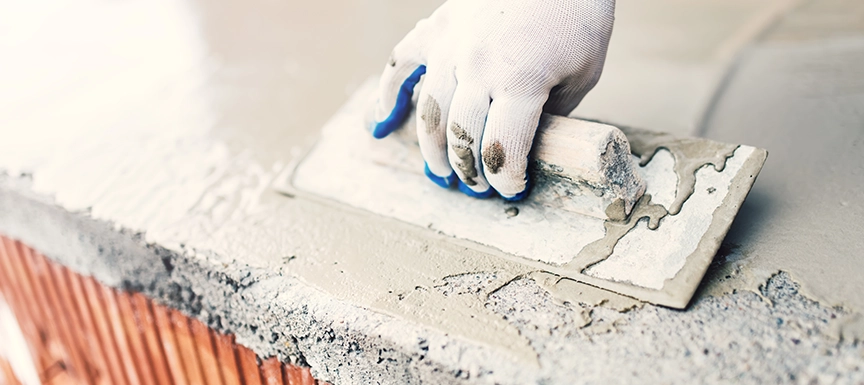
What is Cementitious Waterproofing?
Cementitious waterproofing refers to liquid or slurry coatings that are cement-based and provide a waterproof barrier over concrete surfaces. These products work in conjunction with waterproof cement mixes. Nerolac Perma Cement is ideal for waterproofing concrete surfaces and further strengthening the barrier against water ingress provided by waterproof cement mixes.
Types of Cementitious Waterproofing Products
There are two main categories of cementitious waterproofing:
- Concrete Surface Retarders—Also called membrane-forming curing compounds, they are paint-like liquids rolled or sprayed onto fresh concrete. As the cement cures, they form a membrane that seals pores.
- Cementitious Topping/Overlay Mortars—These slurry coatings can be applied to existing concrete as a patching compound or over fresh-poured slabs. They fill voids, crack-bridge, and lock down a waterproof crystalline structure.
Advantages and Disadvantages of Waterproof Cement
Cementitious waterproofing's advantages include compatibility with concrete, moisture curing, self-healing properties, and the ability to withstand surface damage better than thin liquid-applied membranes. Disadvantages can include longer cure times and the potential for efflorescence/staining.
Waterproof Concrete
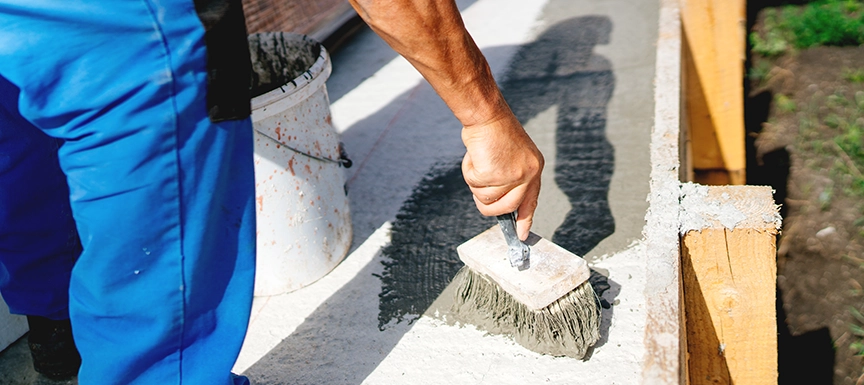
Understanding Water Proof Concrete
Waterproof concrete goes beyond waterproof cement alone by combining multiple protections within the concrete mix. Integral waterproofing admixtures are added to fill pores from inside while a barrier membrane is placed.
How Waterproof Concrete is Made
The production process involves:
- A waterproof cement that limits water penetration into hardened concrete is used.
- Very fine aggregates, such as fly ash or ground granulated blast furnace slag (GGBFS), are included during batching. These micro-fillers further densify the mix.
- Adding moisture-curing liquid admixtures or special wax/resin emulsions that migrate to the surface and harden into a barrier skin.
The result is a concrete mix that self-seals during curing and has an impermeable internal structure resistant to water under pressure on all sides. It provides a total barrier against moisture for more critical applications.
Practical Uses of Waterproof Concrete
Common uses of waterproof concrete involve anything requiring absolute water immersion protection, like water tanks, sewage/wastewater containment, below-grade pool structures, and marine infrastructure in submerged conditions.
Water Resistant Concrete
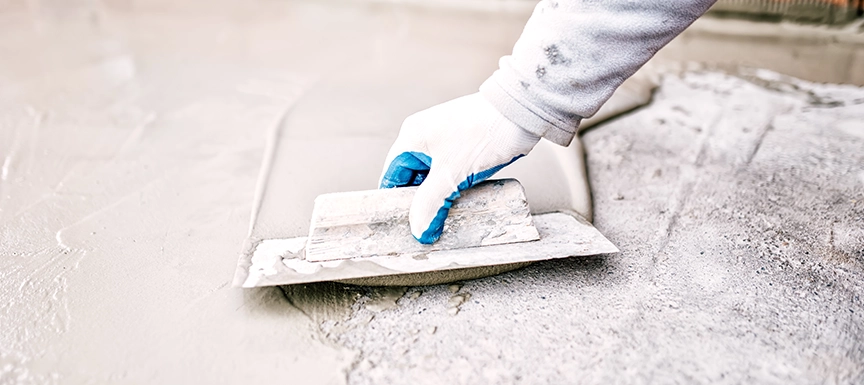
What Makes Concrete Water Resistant?
While not fully waterproof, water-resistant concrete employs measures to limit water penetration with a breathable design significantly. It uses:
- A low water-cement ratio during batching for a denser, less porous concrete.
- Special water-reducing or high-range water-reducing (HRWR) admixtures to hydrate the cement more efficiently.
- Air entrainment bubbles tiny air pockets that provide cushioning against freeze/thaw damage.
Differences Between Water Resistant and Water Proof Concrete
While water-resistant and waterproof concrete both aim to limit water penetration, there are key distinctions in their permeability:
- Waterproof concrete is completely impermeable and will not allow any water to pass through, even under pressure. It creates a total barrier to moisture.
- Water-resistant concrete is partially watertight. It is more permeable and will allow a small amount of water vapour transmission to avoid damage from water buildup behind the material.
- The density and pore structure also differs - waterproof varieties have a pore size of less than 0.012mm, while water-resistant is more porous with pores <0.05mm wide.
- Water-resistant concrete relies on limiting water flow through natural density from the mix design and evaporation/drying. Waterproof versions use added barriers and sealants.
Applications of Water Resistant Concrete
Some common applications well-suited for water-resistant concrete include:
- Above-grade foundation walls, retaining walls, and basement perimeter walls. These are below-ground but allow drying to the surrounding air.
- Exterior flatwork like sidewalks, driveways, parking structures - able to withstand occasional flooding or wet weather.
- Marine environments above tidal range, like docks, piers, and marinas, are not fully submerged.
- Flood-prone areas for structures above expected flood levels.
- Sewer manhole components and wastewater containment that will transfer gases.
The Bottom Line
Waterproof cement, waterproof concrete, and water-resistant concrete play important roles in construction by providing moisture protection for buildings and structures. The right choice depends on the application and permeability requirements. For your construction projects in wet or flood-prone areas, consider Nerolac's range of waterproof cement and concrete products to protect your structures from water seepage and damage throughout their lifetime. Rely on Nerolac for your concrete needs in speciality.
Nerolac Paints, a leading paint company in India offers a wide range of wall paint colours & painting services & solutions for homes & offices.

Colour Combination for Walls: 10 Beautiful House Colour Combination Ideas
A Guide To Trending Colour Combinations For Walls With Images
12 Stylish Green Colour Combinations and Photos
Green Colour Combinations
What Colours Match with Blue? 14 Colour Combinations with Blue for Your Home
Blue is a universally popular colour for décor and design
-
Recent Blogs
- Zodiac Sign Meanings: Choose Lucky Colours With Your Astrology Sign
- Top 10 Painting Ideas for North & South Facing House Vastu
- Top 10 Creative Wall Furnishing Ideas For Your Lovely Home
- Top 10 Mocha Mousse Colour Combinations and Photo Inspirations
- How Heat Resistant Paint for Roofs Can Reduce Your Indoor Temperature?
Get in Touch
Looking for something else? Drop your query and we will contact you.
Get in Touch
Looking for something else? Drop your query and we will contact you.
Popular Searches
Get in Touch
Looking for something else? Drop your query and we will contact you.


